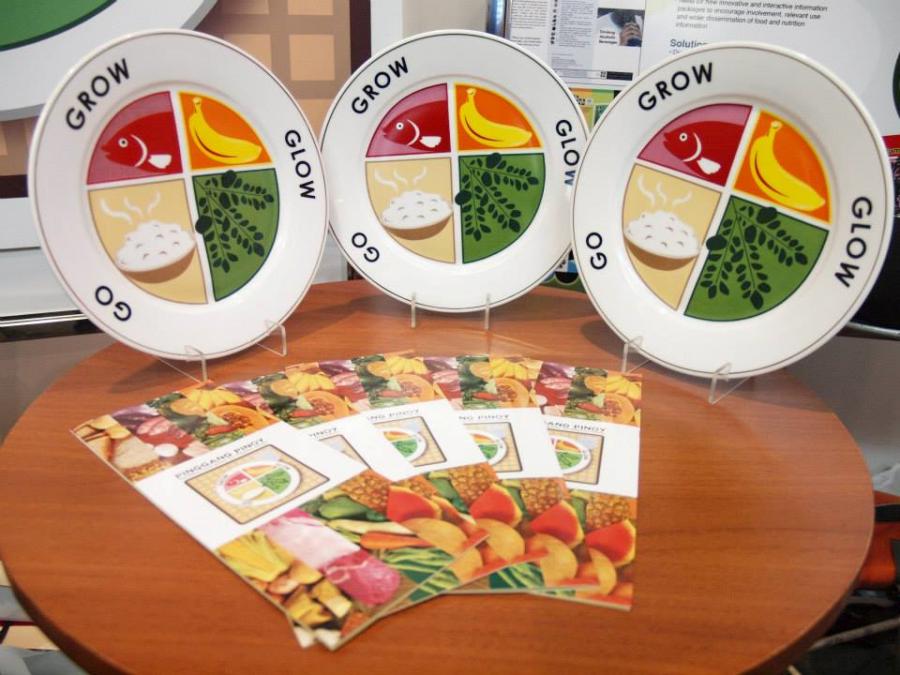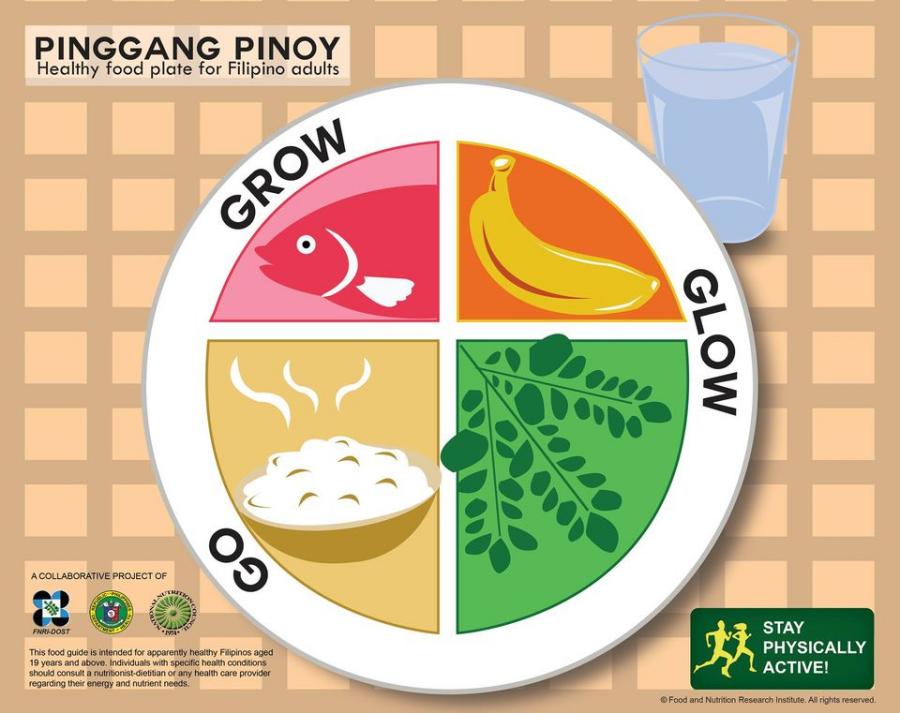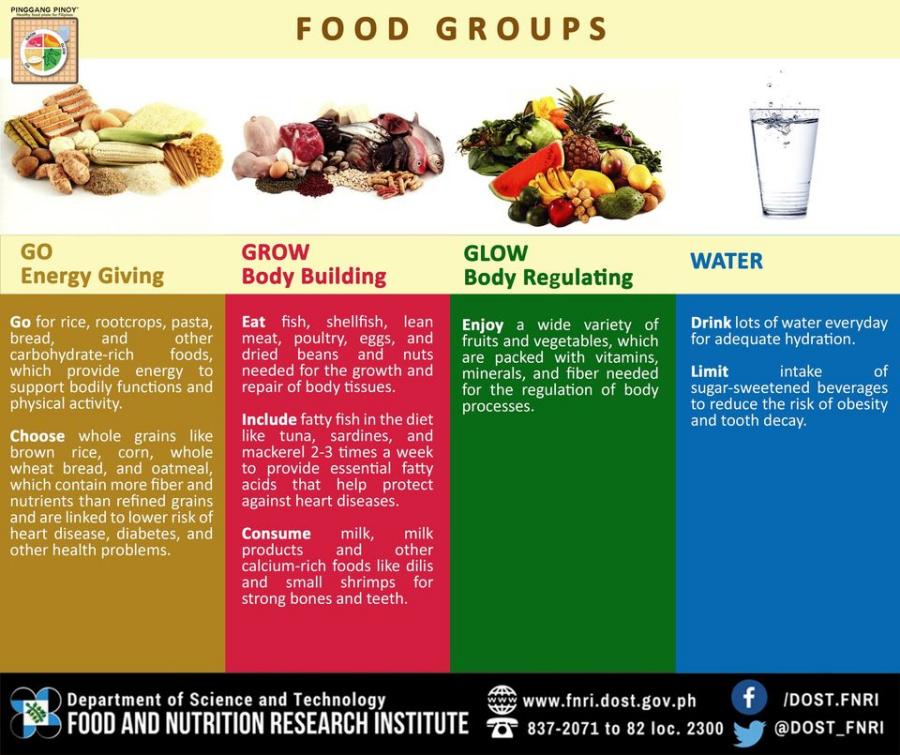The Department of Health (DOH) is the government body that is responsible for making sure that all Filipinos have access to basic health services; it also regulates all of the health products and services in the country. Meanwhile, the Food and Nutrition Research Institute (FNRI) is the main research arm when it comes to food and nutrition.
The DOH and FNRI, along with other government agencies, continuously come up with ways to promote good health and nutrition among Filipinos. One of their most significant programs with regard to nutrition is the “Pinggang Pinoy” (Filipino Plate). In this article, we will talk all about this amazing program and its features.

Guide to Healthy Eating: Pinggang Pinoy
The Food and Nutrition Research Institute (FNRI) introduced the Pinggang Pinoy several years ago, in 2014. Basically, it is a visual tool that is designed to help all Filipinos adopt healthy eating habits, thus leading to their good health and well-being.
Notably, the FNRI is one of the research and development institutes of the Philippine Department of Science and Technology (DOST).
What is Pinggang Pinoy?
As the name suggests, the Pinggang Pinoy is literally a “plate” that serves as a visual guide for Filipinos. It presents the right amount — and the right types — of food that should be consumed in every meal. Just by looking at Pinggang Pinoy, we can easily remember the right portions of food to eat every time!
The Pinggang Pinoy presents three basic food groups that form part of a healthy and nutritious meal. It was conceptualized by the FNRI, in coordination with the DOH, the National Nutrition Council (NNC), and the World Health Organization (WHO).

Pinggang Pinoy Food Groups
The first Pinggang Pinoy was designed for Filipino adults (19-59 years old). The plate features three basic food groups: Go, Grow, and Glow foods. Remember your elementary days? Let’s recall what each food group is all about!
“Go” Foods
“Go” foods are those that provide energy to our bodies. Some common examples are rice, bread, pasta, and root crops. Foods that contain more fiber such as brown rice, oatmeal, and whole wheat bread are recommended, since these are known to help lower the risk of diabetes, hypertension, heart disease, and other health conditions.
Go foods comprise one third (1/3) of the Pinggang Pinoy.
“Grow” Foods
As the term implies, “Grow” foods help our bodies grow! These foods are rich in protein and comprise one sixth (1/6) of the Pinggang Pinoy. Examples of Grow foods are meat, poultry, fish, shellfish, eggs, nuts, and beans.
Two to three times a week, eating fish such as sardines, tuna, and mackerel is recommended. These foods contain essential fatty acids, which help combat heart-related diseases.
“Glow” Foods
“Glow” foods are those that help build, protect, and regulate our body’s processes. These foods are filled with vitamins, minerals, and fiber, which is good for our bodies. Examples of Glow foods are fruits and vegetables.
Glow foods comprise one half (1/2) of the Pinggang Pinoy. So don’t forget to eat your veggies… they’re good for you!
Water
If you look closely at the Pinggang Pinoy, you will see a glass of water beside the plate. In addition to the Go, Grow, and Glow foods — water is essential!
Speaking of water, be sure to limit your intake of sugary drinks, especially soft drinks and artificial juices. Sugary drinks have been linked with weight gain and obesity, along with increased risk of tooth decay and diabetes.

Colors of Pinggang Pinoy
As mentioned previously, the first Pinggang Pinoy was designed for adults. Soon after this, plates for different groups were designed. Each of the following groups have been assigned a “placemat color” for easier recall: children (3-12 years old); adolescents (13-18 years old); adults (19-59 years old); elderly (60 years and above); pregnant and lactating women.
At this point, it must be emphasized that for every group, the proportions for Go, Grow, and Glow foods remain the same. The main difference is in the serving sizes of the food.
And now, let us learn all about the colors of Pinggang Pinoy!
Orange: Children (3-12 years old)
The Pinggang Pinoy with the orange placemat was designed for children. This color was chosen since it symbolizes young kids’ energy, vitality, excitement, warmth, and cheer. Children are also usually drawn to bright colors, such as orange.
For parents, this Pinggang Pinoy can help them select the best kinds of foods for their kids. It also serves as a reminder with regard to the right food portions that are necessary for children’s overall nutrition.
Blue: Adolescents (13-18 years old)
The Pinggang Pinoy with the blue placemat was designed for adolescents or teenagers. Blue, which is the color of the sea and the sky, is associated with strength, dependability, and being “cool” — traits that are representative of today’s teenagers.
For teenagers, the Pinggang Pinoy serves as a guide about the right kinds and portions of food that they should be eating. As they grow towards adulthood, teenagers should learn how to take care of their bodies. This involves making the right decisions when it comes to food, health, and nutrition.
Brown: Adults (19-59 years old)
The Pinggang Pinoy with the brown placemat was designed for adults. Notably, the color, which was inspired by the woven “buri” (palm), symbolizes the color of the Filipino Malay race.
Filipino adults comprise the working population; hence, good health and nutrition is more important than ever. Once again, the Pinggang Pinoy is a reminder that food should be eaten in the right portions. The next time you are tempted to eat “unli rice” — think about this plate and remember to consumer the proper food portions!
Red: Elderly (60 years and above)
The Pinggang Pinoy with the red placemat was designed for the elderly. The color red symbolizes energy, power, and courage. Despite their age, elderly Filipinos should strive to remain healthy, energetic, and strong.
For Filipinos who are 60 years old and above (a.k.a. “senior citizens”), the Pinggang Pinoy continues to serve as an important guide towards good health, good nutrition, vitality, and longevity.
Green: Pregnant and Lactating Women
The Pinggang Pinoy with the green placemat was designed for pregnant and lactating women. This color was chosen because green symbolizes nature, health, growth, fertility, and new life.
While she is pregnant, a woman must eat the right kinds and right portions of food, as recommended by the Pinggang Pinoy. She should also know that the first 1,000 days of a baby’s life — which starts from the womb — is very important. She is eating not just for herself, but for her baby, too!
As soon as the child is born, the woman will begin to breastfeed. This means that she should eat properly so that she can produce milk for her baby. Hence, the Pinggang Pinoy serves as a good reminder for all mothers!
NOTE: The colors of Pinggang Pinoy was conceptualized by DOST-FNRI in collaboration with the National Nutrition Council (NNC). An agency under the DOH, the NNC is in charge of creating policies for national and local nutrition planning.

Important Reminders
In addition to the Pinggang Pinoy, here are some more important reminders from the NNC regarding food consumption. The following tips apply to all age groups:
- Do not skip breakfast; it is the most important meal of the day.
- Eat smaller sizes of salty, fried, and sweet foods.
- Be sure to get enough sleep every night.
- Avoid smoking and drinking alcoholic beverages.
- Learn to understand nutrition information on food labels.
- Maintain an active lifestyle.
Finally, it must also be noted that the Pinggang Pinoy applies to those who are generally healthy. For Filipinos who have health conditions such as diabetes and hypertension, it is recommended that they consult a doctor, nutritionist, or dietitian regarding their food, energy, and nutrient needs. What works for some people may not work for others; it’s always a case-to-case basis.
In other words, when in doubt… ask your doctor!
Video: All About Pinggang Pinoy
To have a better idea about Pinggang Pinoy, as well as to learn the basis for its conceptualization, check out this informative video shared by DOST-FNRI through their YouTube channel:
Summary
This article introduced us to the Pinggang Pinoy, a visual tool to help Filipinos eat the right kinds of food, in the right portions. We recalled that each meal should have a portion of the three basic food groups: Go, Grow, and Glow foods. We also learned that each person has different nutrition needs. Hence, the Pinggang Pinoy for different age groups — including pregnant and lactating women — were designed.
For more information about this visual tool, as well as to get more tips on good health and nutrition, please visit the official website of the Food and Nutrition Research Institute (FNRI) of the Department of Science and Technology (DOST).
Now that you’ve learned all about the Pinggang Pinoy, would you like to know about Larong Pinoy? Check out this article for our feature on the best traditional Pinoy games and 90s Larong Pinoy. Enjoy!